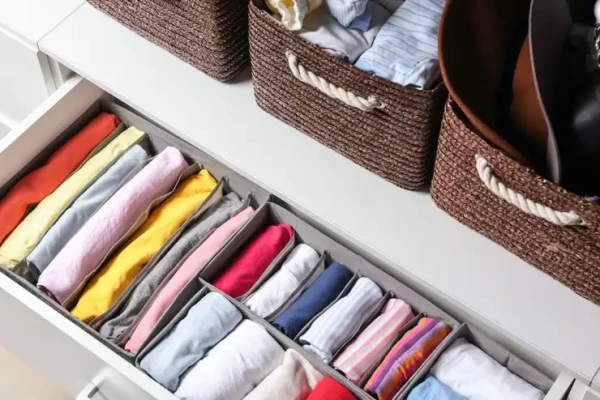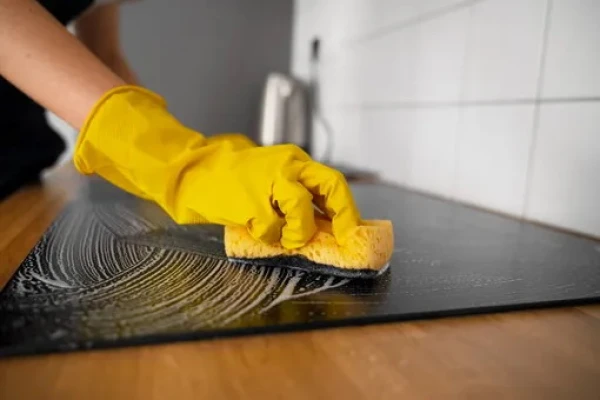
Summer has officially ended, no matter how much we wish otherwise, and putting away light items is not just about "packing them away and forgetting," but about preserving fabrics and, of course, money.
Cotton, linen, silk, and elastic materials suffer from dust, sweat residues, and sunscreen: the fibers turn yellow, become brittle, elastics lose their elasticity, and odors and the risk of mold settle in the folds. Proper preparation and packing stop this process: items go on vacation clean and dry, protected from light, moisture, and insects. In spring, they will return without gray residue, mustiness, and creases, rather than as a "recycling capsule."
By the way, there is also an organizational sense. Seasonal rotation frees up shelves, simplifies morning choices, and reduces visual noise in the closet. The winter wardrobe does not have to compete with sundresses and shorts, plus it makes shopping planning easier: it is clear what is really needed and what is already in good condition. The result is a tidy closet, long-lasting items, and fewer impulsive expenses.
Start with Hygiene and a "Minor Technical Inspection"
Before packing, it is necessary to wash everything or take it to the dry cleaner, even if it seems that the items are clean. Traces of sweat, creams, and deodorants darken and smell stronger over the winter. Stains should be treated immediately: for white cotton, an enzyme gel and a short cycle will do, for delicate fabrics — a mild detergent with a neutral pH. Don’t forget to check seams, buttons, fasteners, and small pulls — and fix them now so you don’t forget by spring. Dry only until completely dry, otherwise a musty smell will appear.
Sort and Fold by "Families"
Sort by types of fabric and volume: thin cotton and silk — in one pile, denim and thick linen — in another, knitwear separately. Straw hats and rigid bags should be stored with shape holders or stuffing made of acid-free tissue paper. Swimsuits and elastic items should be folded separately, so elastics do not come into contact with rough zippers and fasteners. This saves space and reduces the risk of snags.
Choose Breathable Packaging and Know When Vacuum is Needed
It is ideal to have sturdy fabric boxes or cotton covers with a viewing window for these tasks, placing acid-free paper inside for layering. Vacuum bags are suitable for bulky but not fragile items: bedding, towels, t-shirts without embellishments. Silk, linen with embroidery, straw accessories, leather details — should not be vacuumed, otherwise creases and deformation can easily occur. Knitwear should be stacked, not hung on hangers, to prevent stretching. Denim can be rolled into "rolls," which will reduce the likelihood of creases.
Protection from Moisture, Odors, and Insects
It is recommended to place 1–2 packets of silica gel or absorbent granules at the bottom of the boxes, and on top — cedar discs or sachets with lavender, which repel moths and absorb excess moisture without an aggressive smell. The scent should not come into direct contact with the fabric: sachets should be placed in the corner, not on the item. No mothballs or open aromatic oils — they are absorbed into the fibers and can stain. Shoes with insoles should be stored with cedar shoe trees or at least dense stuffing, and the soles should be wiped and dried.
The Right Place and Clear Labels
The ideal storage conditions are shade, coolness, dry air, and stable temperature. Avoid places near batteries, kitchens, and balconies, and place boxes on the top shelves of the closet or under the bed, using a thin dust cover if necessary. Each should be labeled: "Cotton T-shirts S/M, 12 pcs.", "Light Dresses, 6 pcs.", "Swimsuits and Pareos", "Accessories: Sun Hats, Belts". This saves time in spring and disciplines household members, who may finally be able to find everything without your help.













